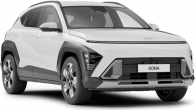The Challenger was the product of an earlier era when it was expected that four-wheel drive vehicles would be rough and tough.
Its roots could be traced back to the previous generation of the rugged Triton ute. Smaller than the popular Pajero the five-seater Challenger still had most of the Pajero's creature comforts and four-wheel drive systems.DESIGN
In 2000 the Challenger PA was released in a significant upgrade with new looks, new rear suspension, a new automatic transmission and a new up-spec LS model, all in the hope of appealing more to families who were then showing a desire to move into mid-sized wagons.
The new front and rear looks were designed to brighten and freshen to Challenger with a new grille, chrome highlights, rear lamps and bumper, and new side mouldings.
The engine was the same 3.0-litre V6 as used in the NK Pajero and the Triton ute. It was a smooth revving, enthusiastic engine that gave the Challenger decent on-road performance, and there was plenty of torque on tap for off-road driving.
TECHNOLOGY
New to the PA was the INVECS II auto transmission that kept the engine working in its most productive range. The auto was yet another sign of Mitsubishi's revised intent with the Challenger, another was the change from hard-riding rear leaf springs to the softer ride of coils more appreciated by towns folk.
DRIVING
On the black top the Challenger's ride was smooth, quiet and comfortable, although it still rolled quite a bit in the way those old off-roaders did. Off-road it was competent with good ground clearance and an easy selection four-wheel drive system, which included a low-range gear.
Standard equipment was generous with air, power mirrors and windows, central locking and CD sound on the base model, plus cruise, sidesteps, fog lamps and leather trim on the LS.
IN THE SHOP
The trade gives the Challenger a big tick for reliability. They don't have any flaws to be concerned about providing they are well serviced as per the schedule, which is every 15,000 km. The V6 has a timing belt and that needs to be changed every 100,000 km.
Check for a service record to confirm regular maintenance, and inspect the body for shoddy crash repairs. It's also important to check for regular off-road use, which can show up as underbody damage, sand blasting underneath, scratches on the paintwork, and dust intrusion to the cabin.
Avoid cars that appear to have been used offroad regularly
IN A CRASH
Driver and front passenger airbags were standard, but the important option of ABS brakes was only standard on the LS. To get ABS on the base model you had to buy an option pack that included it.
ANCAP doesn't have a rating for the Challenger, but it would be fair to expect it to come in towards the bottom of the ratings scale being such an old model and lacking most of the modern safety systems.
UNDER THE PUMP
The Challenger was no lightweight and the V6 no fuel-miser, so the combination was a little thirsty with a claimed average of almost 12 L/100 km. Running costs could be cut if needed by converting to LPG.
AT A GLANCE
Price new: $36,990 to $43,885
Engine: 3.0-litre V6 petrol; 136 kW/265 Nm
Transmission: 5-speed manual, 4-speed auto, 4WD
Economy: 11.9 L/100 km
Body: Wagon Variants: Base and LS
Safety: N/A
Green: N/A
Mitsubishi Challenger 2000: (4X4)
| Engine Type | V6, 3.0L |
|---|---|
| Fuel Type | Unleaded Petrol |
| Fuel Efficiency | 13.5L/100km (combined) |
| Seating | 5 |
| Price From | $4,070 - $5,940 |


.jpg)

.jpg)







.png)











